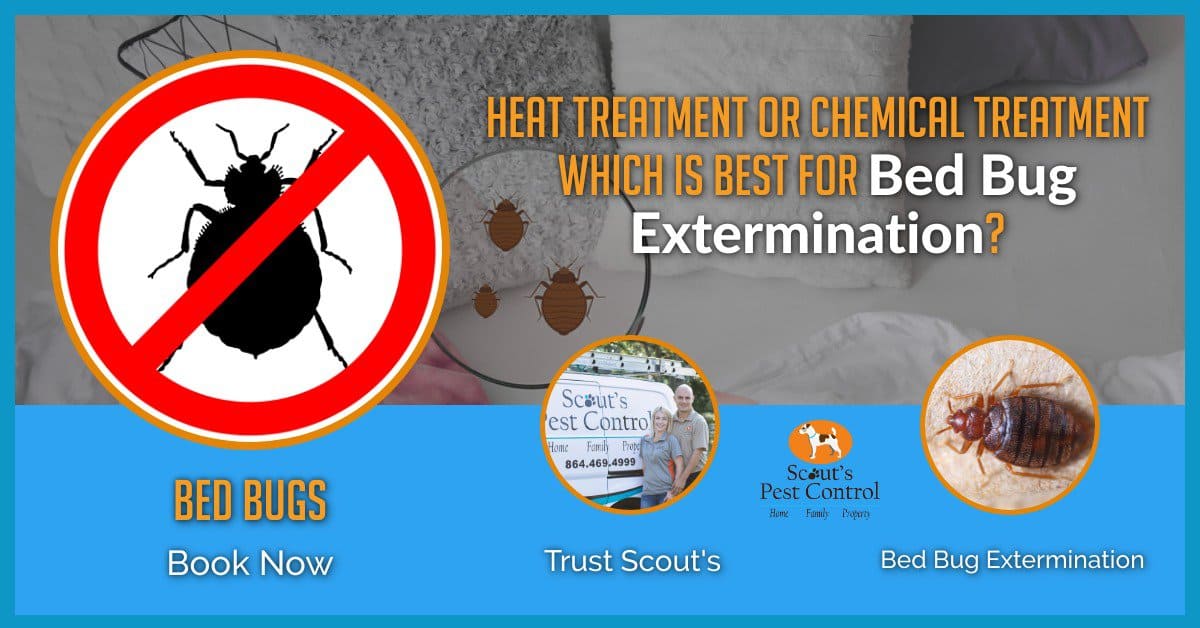Specialist Kings Bug Control Services Cincinnati OH
Wiki Article
Kinds Of Pest Control: Which Technique Is Right for Your Invasion?
When faced with an insect infestation, the selection of an appropriate approach for bug control is essential in effectively taking care of the circumstance. By discovering the numerous kinds of parasite control techniques available, individuals can make enlightened decisions tailored to their unique situations, guaranteeing a more sustainable and efficient end result in pest removal.Chemical Parasite Control
Chemical insect control entails using artificial or normally derived chemicals to handle and get rid of pest populations efficiently. This method is generally used in agriculture, forestry, and property settings to deal with a broad range of insects, consisting of weeds, rats, and bugs. The use of chemical pesticides can give quick and targeted options to pest problems, making it a prominent choice for many individuals and businesses.Among the key advantages of chemical parasite control is its capability to promptly eliminate bugs, reducing the threat of damages to plants, property, and human wellness. By utilizing specific chemicals that target certain parasites, this method can effectively manage invasions while lessening injury to helpful microorganisms and the atmosphere when applied correctly.
However, using chemical pest control also raises worries concerning prospective adverse results on non-target species, water resources, and human wellness. It is critical to follow safety guidelines, use chemicals sensibly, and think about alternative pest control techniques to lessen these threats and ensure sustainable pest management practices.
Biological Bug Control
Organic bug control, also known as biocontrol, utilizes living microorganisms to take care of and minimize pest populations naturally. This technique uses the power of nature to manage bugs without the requirement for artificial chemicals. Biocontrol can entail the introduction of natural opponents of the parasite types, such as virus, bloodsuckers, or killers, to suppress insect populations. By utilizing the insect's natural predators or microorganisms, biological bug control uses a sustainable and ecologically friendly remedy to pest monitoring.
Mechanical Pest Control
Utilizing hands-on and physical approaches to take care of bug populaces, mechanical insect control uses an alternate approach that does not count on using living organisms or synthetic chemicals. This approach involves using obstacles, catches, or various other devices to physically discourage or eliminate bugs. By blocking pest access factors or establishing up catches to catch them, mechanical bug control can properly minimize invasions without introducing chemicals right into the environment.One usual instance of mechanical pest control is the usage of mesh displays on doors and windows to stop pests from going into structures. This simple yet efficient technique acts as a physical obstacle, maintaining pests out while enabling proper ventilation. In addition, gadgets like mousetraps, fly swatters, and ultrasonic repellents fall under the mechanical pest control classification.
While mechanical insect control methods click for more info can be labor-intensive and call for regular monitoring and maintenance, they supply a sustainable and eco-friendly option for handling insect invasions. By integrating various mechanical techniques, residential or commercial property proprietors can develop a comprehensive bug control technique that reduces reliance on chemical pesticides.
Physical Pest Control

Some usual physical parasite control methods include the use of barriers such as webs or displays to avoid bug entrance, catches to catch and get rid of parasites, and hand-picking to literally eliminate bugs from plants or frameworks. Additionally, methods like heat therapies can be utilized to manage parasites like bed pests by raising the temperature level to levels that are dangerous to the pests.
Physical parasite control is particularly useful in integrated parasite management (IPM) methods, where numerous parasite control techniques are integrated for reliable insect administration while minimizing the usage of chemicals. By making use of physical pest control methods, individuals can effectively attend to pest invasions with marginal ecological effect.
Integrated Insect Monitoring
When applying physical bug control techniques as part of insect management strategies, Integrated Pest Administration (IPM) becomes a comprehensive strategy that leverages numerous methods Get More Info to successfully regulate pest populaces. IPM concentrates on lasting avoidance of parasites through a combination of biological, cultural, physical, and chemical tools tailored to specific insect concerns. By integrating numerous control methods, IPM intends to minimize the dangers linked with bugs while likewise reducing reliance on chemical services.One key element of IPM is the focus on monitoring and analyzing pest populations to establish the most appropriate control approaches. This positive approach permits early intervention and targeted strategies, resulting in extra efficient pest administration. Furthermore, IPM advertises ecologically pleasant practices by focusing on non-chemical control methods and only utilizing pesticides as a last resource.
Conclusion

By using the insect's natural predators or pathogens, biological pest control offers a lasting and eco pleasant option to pest administration. - Kings pest control Cincinnati
Utilizing physical and manual approaches to handle insect populations, mechanical pest control supplies a different technique that does not rely on the use of living microorganisms or synthetic chemicals.An effective strategy to taking care of insect populations without counting on chemical or organic methods includes the use of physical parasite control techniques.When carrying out physical bug control approaches as part of pest administration strategies, Integrated Insect Management (IPM) arises as a detailed technique that leverages numerous techniques to properly control pest populaces. Chemical parasite control includes the usage of pesticides, organic insect control utilizes all-natural predators, mechanical bug control involves physical obstacles, physical pest control consists of capturing or eliminating pests, and incorporated pest administration combines several approaches for an alternative strategy to pest control.
Report this wiki page